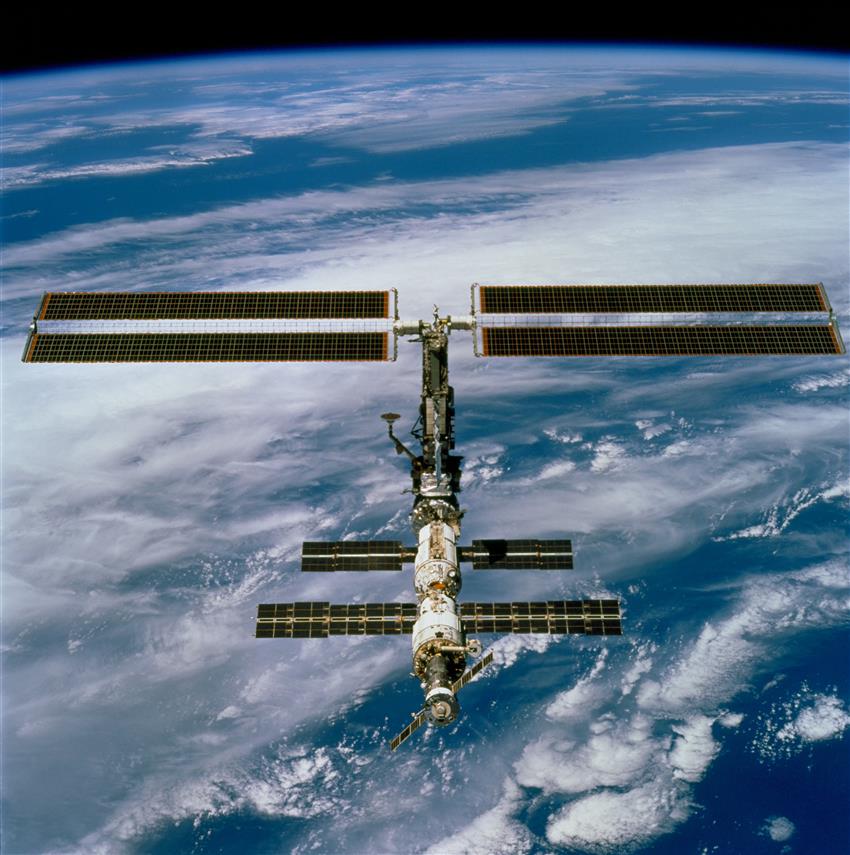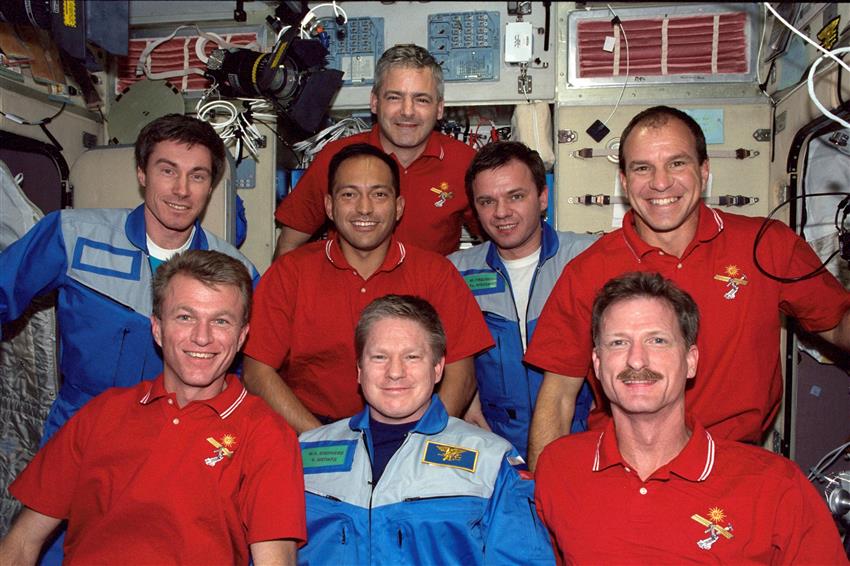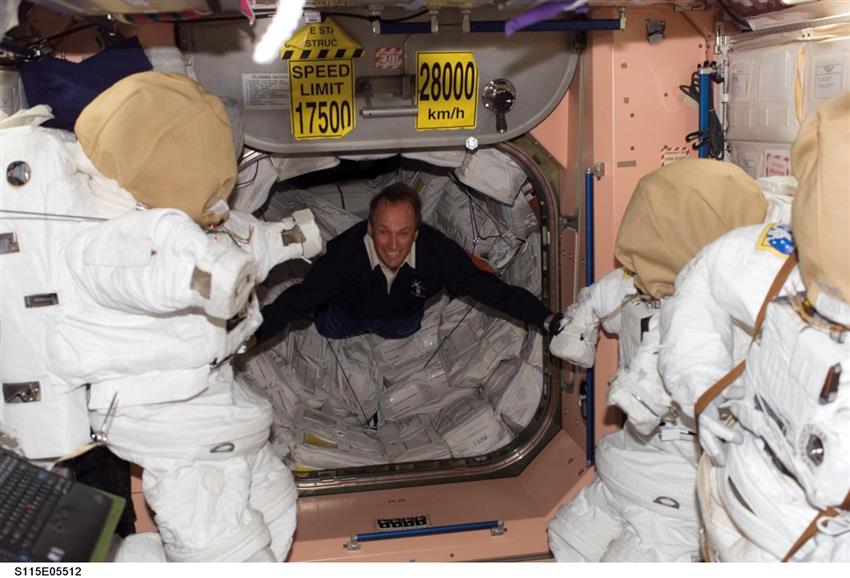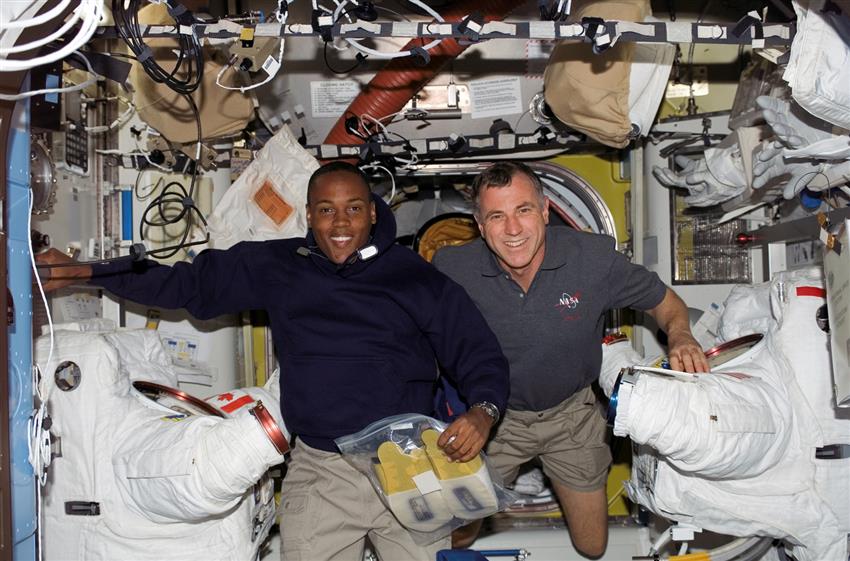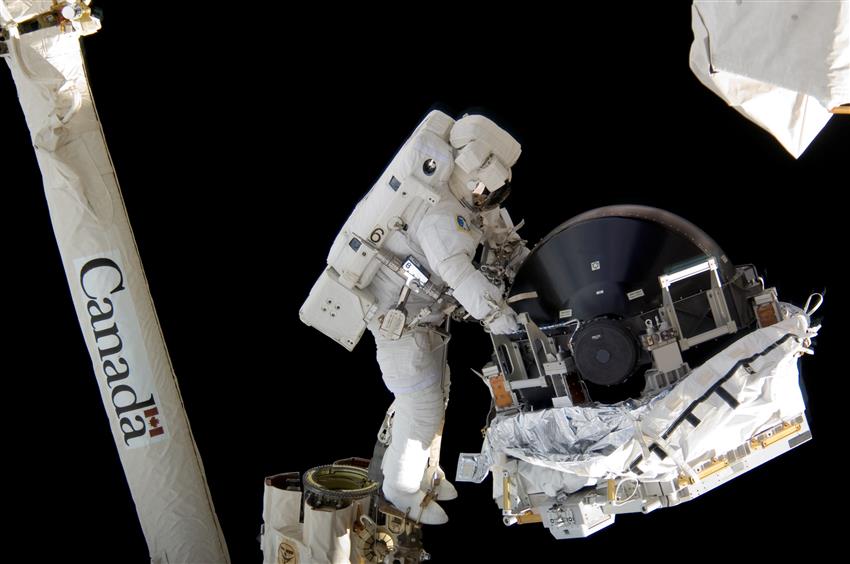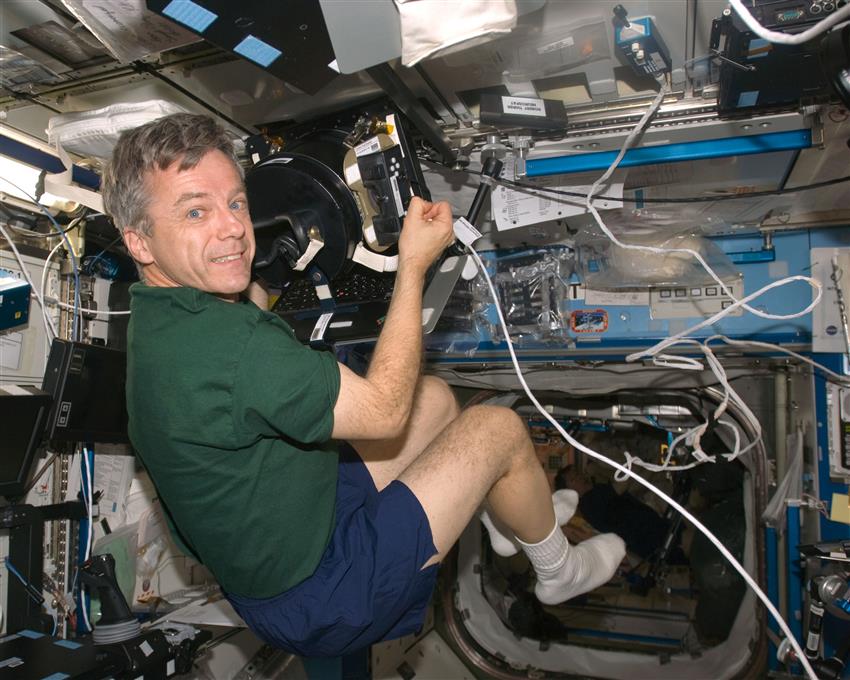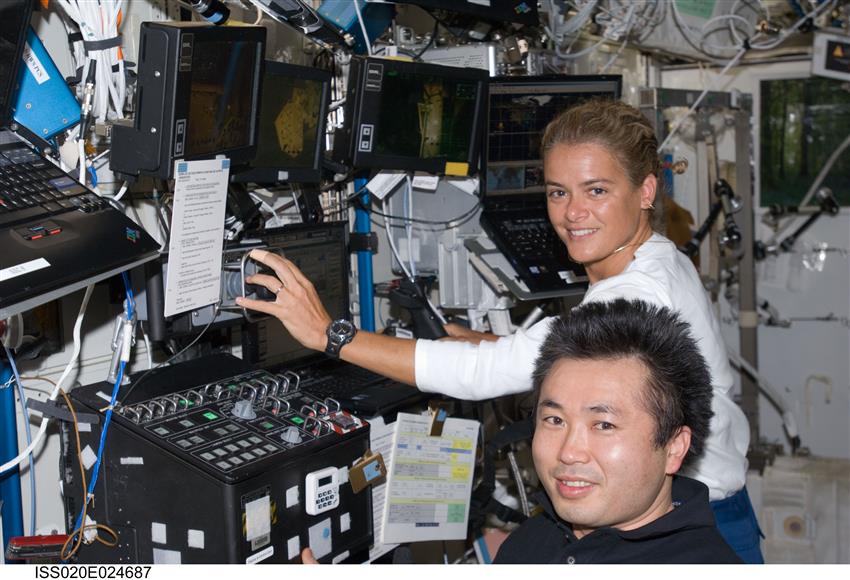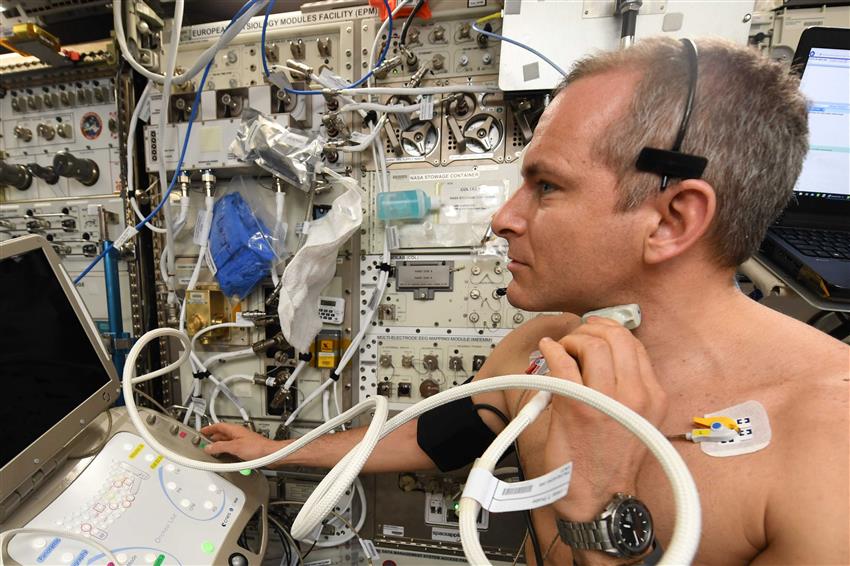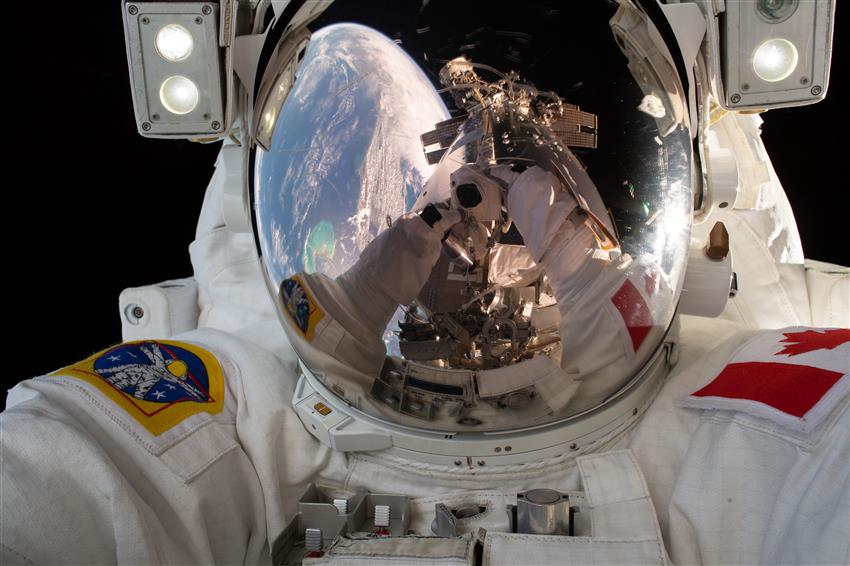In photos: 20 years of continuous human presence on the International Space Station
, marks 20 years of continuous human presence on the International Space Station (ISS). This unique research laboratory is considered the one of the most ambitious international collaborations ever, allowing us to test technologies and conduct scientific experiments that have positive impacts on our lives on Earth.
It is largely thanks to the ISS that the international space community is now setting its sights on deep-space destinations like the Moon and Mars. For 20 years, the ISS has been a vital part of space exploration: it serves as a test bed that enables us to prepare to explore deeper into space. The Canadian Space Agency (CSA) is proud to play a big role in this endeavour.
In honour of the 20th anniversary of continuous human presence on the ISS, we invite you to look back through these photos at this fantastic adventure with our Canadian astronauts.
Did you know?
Julie Payette had the distinction of becoming the first Canadian to board the Station. She made history when the shuttle docked for the first time with the ISS during STS-96 in .
Under construction
Taken by CSA astronaut Marc Garneau in , this picture of the ISS features the orbiting outpost in one of its early configurations. Garneau used Canadarm on the Shuttle to install the solar arrays that that generate electricity to run all of the Station's systems, including life support, scientific equipment and daily operations.
A Canadian visits the first ISS crew
In , the five astronauts of Mission STS-97 – including Marc Garneau, mission specialist (back) – visited the three crewmembers of Expedition 1 on board the ISS. A veteran of three space missions and the first Canadian in space, Marc Garneau logged over 677 hours in space.
Ready to operate Canadarm2
In , as part of Mission STS-115, CSA astronaut Steve MacLean and his crewmates successfully resumed the assembly of the ISS. During this mission, Steve MacLean became the first Canadian to operate Canadarm2 in space and the second Canadian to perform a spacewalk. In this photo, he is happy to be visiting the ISS for the first time.
A Canadian record
Canada's contribution is crucial to the success of the ISS. In , during Mission STS-118, CSA astronaut Dave Williams (right) set a Canadian record by spending almost 18 hours outside the ISS during three spacewalks, as part of the same mission. He is pictured here with NASA astronaut Alvin Drew.
A memorable spacewalk
While anchored to the foot restraint on Canadarm2 during a spacewalk in , CSA astronaut Dave Williams removed a faulty control moment gyroscope (CMG) and installed a new CMG into one of the Station's trusses. The four CMGs on the ISS are used to control the Station's attitude in orbit.
Navigating in microgravity
In , CSA astronaut Bob Thirsk participated in the Bodies In the Space Environment (BISE) experiment. This Canadian experiment was designed by researchers from York University. Its purpose was to study how astronauts distinguish up from down in a near-weightless environment.
Two Canadians meet in space
CSA astronauts Julie Payette, STS-127 mission specialist; and Robert Thirsk, Expedition 20 flight engineer, are all smiles in the Destiny laboratory of the ISS in .
An international space feast
In , there were 13 people of five different nationalities in space at the same time. To mark this historic occasion, the astronauts from the Space Shuttle invited the astronauts from the ISS to dinner. Canadian appetizers and dishes were served. On the menu: salmon pâté from British Columbia, shrimp garlic noodles, Indian lentils and rice, beef jerky from Alberta, smoked salmon, fruit bars from Ontario, dark chocolate covered cranberries and, to top it all off, maple leaf cookies. This meal was planned, tested and packaged on Earth with the help of nutritionists from the CSA and NASA.
Behind the scenes of Canadarm2
Japanese astronaut Koichi Wakata and CSA astronaut Julie Payette at the controls of the Canadarm2 robotic workstation in the Destiny laboratory of the ISS in
Happy holidays!
Just because you're in space doesn't mean you can't be festive! In , the Expedition 34 crewmembers gathered in the Unity module of the ISS to celebrate Christmas. On the right, CSA astronaut Chris Hadfield and his famous guitar.
A Canadian commander
In , CSA astronaut Chris Hadfield (left) became the first Canadian to command a spaceship. He served as Commander of the ISS during the second portion of his third space mission. During his career as an astronaut, he was also the first Canadian to operate the Canadarm in orbit, the first Canadian to perform a spacewalk, and the only Canadian to board the Russian space station Mir.
Cupola and Canadian symbols
In , at an altitude of about 400 km, CSA astronaut David Saint-Jacques smiles for the camera with two Canadian symbols. During his mission, he became the fourth CSA astronaut to conduct a spacewalk and the first to use Canadarm2 to catch a visiting spacecraft. Together, he and his crewmates dedicated a record amount of time to science on the ISS.
For science
During his mission, David Saint-Jacques participated in seven Canadian scientific experiments. In this photo taken in , he is taking ultrasounds of his blood vessels for the Canadian study Vascular Echo, led by Dr. Richard Hughson from the University of Waterloo. The findings of a previous experiment, Vascular, suggest that a daily exercise routine is not enough to counteract the effects of sedentariness caused by weightlessness on the body.
Epic selfie
David Saint-Jacques took part in his first spacewalk on . He and NASAs astronaut Anne McClain performed a series of maintenance tasks on the exterior of the orbiting laboratory for 6 hours and 29 minutes.
A marvel of technology
The ISS remains one of humanity's biggest achievements. For over 20 years, this orbiting laboratory and its inspiring inhabitants have enabled scientific discoveries and technological advances that are paving the way for the next exciting step of space exploration. Here's to the next chapter!

